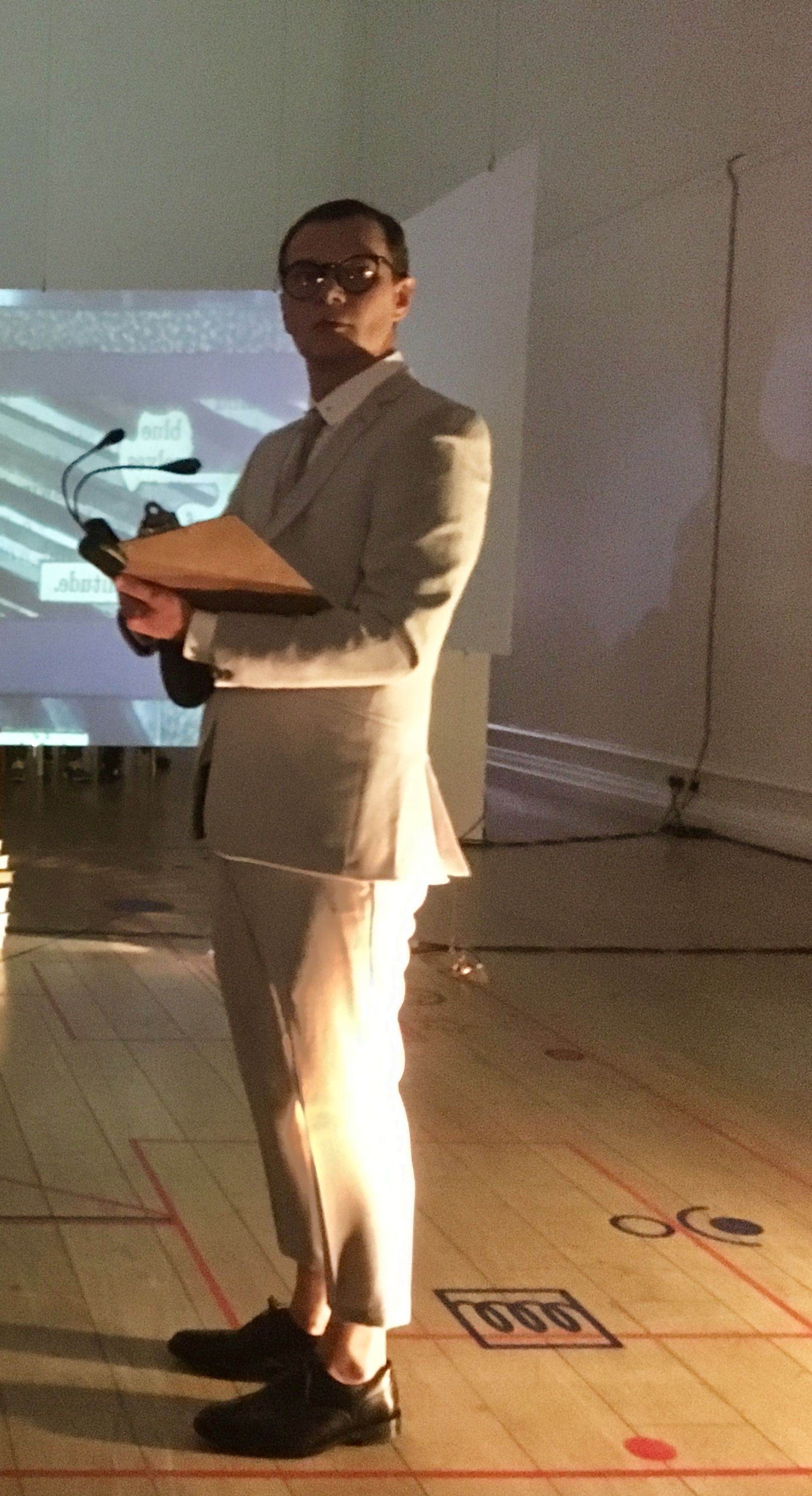The artist-polymath Tom Phillips RA marked his 80th birthday in grand style last weekend (16-17 September) with the premiere of the experimental opera Irma Opus X11B at the South London Gallery in the artist’s home patch of Peckham. Friends, admirers and fellow artists gathered to experience what was described as a “miniature chance opera”, which was in turn drawn from Phillips’ best known work, the book A Humument. This magnum opus involved the artist spending half a century exhaustively reworking and reimagining the pages of a Victorian novel he’d bought for three pence with his friend Ron Kitaj in Peckham Rye back in 1966.
Thanks to the director and designer Netia Jones and her company Lightmap, along with the musical director Anton Lukoszevieze, the South London Gallery’s capacious main space—where Phillips had first shown his work as a student—was filled with the opera’s richly experimental sound of live musicians, soloists and the actor Benjamin O’Mahony, best known from the British TV series Ripper Street. Complementing the intricate new score was an immersive environment of multiple projected images, including appearances by Phillips himself reading from A Humument and poetic fragments of text gleaned from the pages of this original threepenny opera source.
Along with the operatic tropes of the romantic hero (O’Mahony’s character Grenville) and Irma, the object of his often frustrated desire (exquisitely sung by soprano-composer Josephine Stephenson), the piece also offered a sharp sideways glance at the current ranks of the contemporary art world. This took the form of the chorus of three “Art Officers in Uniform”, brandishing illuminated clip boards and uniformly clad in the suits, lace-up brogues and heavy horn-rimmed glasses so beloved of curators and gallerists from Glasgow to Gwangju.

Louisa Buck
However, the work also stirred up associations beyond those of the artist. When at one point Grenville declaimed through a conical megaphone, Phillips’ South London neighbour and fellow Royal Academician, the esteemed nonagenarian Modernist architect Trevor Dannatt, commented that the last time he had seen such a prop in action was at a performance of Dame Edith Sitwell’s Façade at the Festival Hall in the 1950s.



